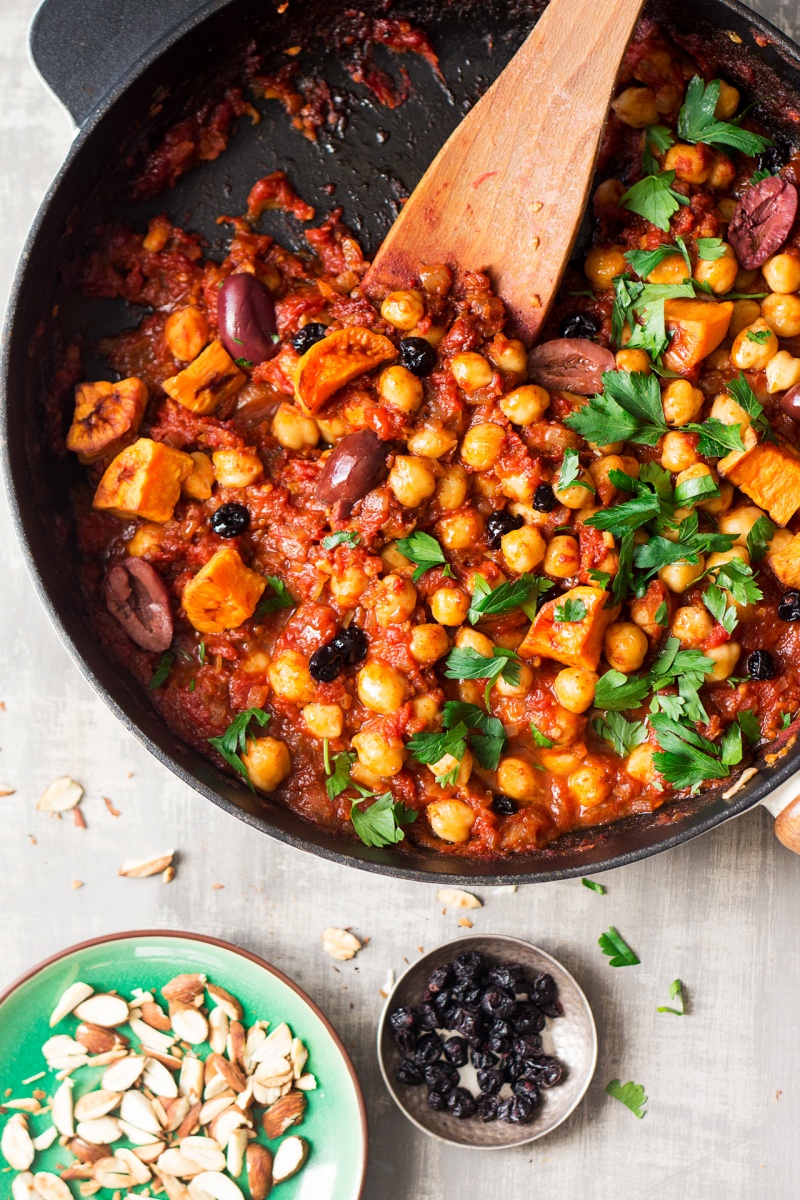
A Culinary Journey to the Mediterranean: Unraveling the Secrets of Chickpea Stew
In the vibrant culinary tapestry of the Mediterranean, where flavors dance harmoniously, the humble chickpea takes center stage in a delectable stew that has tantalized taste buds for centuries. This aromatic dish, known as Mediterranean Chickpea Stew, embodies the essence of the region, blending fresh vegetables, aromatic spices, and the earthy goodness of chickpeas into a symphony of flavors.
A Historical Legacy
The origins of Mediterranean Chickpea Stew can be traced back to the ancient civilizations that flourished along the Mediterranean Sea. Chickpeas, a staple crop in the region, were prized for their nutritional value and versatility. Over time, the stew evolved, incorporating influences from various cultures, including the Greeks, Romans, Arabs, and North Africans.
Ingredients: A Symphony of Flavors
The beauty of Mediterranean Chickpea Stew lies in its simplicity and the harmonious interplay of its ingredients. At its core, the stew features:
- Chickpeas: Dried chickpeas, soaked overnight and cooked until tender, provide the hearty base of the dish.
- Vegetables: A medley of fresh vegetables, such as onions, carrots, celery, and bell peppers, adds vibrant colors, textures, and flavors.
- Spices: A fragrant blend of spices, including cumin, coriander, paprika, and turmeric, infuses the stew with warmth and depth.
- Tomatoes: Ripe tomatoes, either fresh or canned, contribute acidity, sweetness, and a vibrant red hue.
- Broth: Vegetable or chicken broth provides a flavorful liquid base for the stew.
Variations: A Culinary Canvas
While the core ingredients of Mediterranean Chickpea Stew remain constant, variations abound, reflecting the diverse culinary traditions of the region. Some popular variations include:
- Greek-Inspired: Add Kalamata olives, feta cheese, and a squeeze of lemon juice for a distinctly Greek flavor profile.
- Moroccan-Inspired: Incorporate preserved lemons, harissa paste, and dried apricots for a spicy and aromatic Moroccan touch.
- Italian-Inspired: Use cannellini beans instead of chickpeas and add fresh herbs, such as basil and oregano, for an Italian flair.
Cooking Methods: A Journey of Flavors
The cooking method for Mediterranean Chickpea Stew can also vary. Traditional methods involve simmering the stew in a heavy-bottomed pot on the stovetop for several hours, allowing the flavors to meld and develop. For a more modern approach, use a slow cooker or pressure cooker to achieve tender chickpeas and a rich broth.
Serving Suggestions: A Culinary Masterpiece
Mediterranean Chickpea Stew is a versatile dish that can be enjoyed as a main course or a hearty side dish. Serve it with:
- Fresh Bread: Crusty bread is the perfect accompaniment for soaking up the flavorful broth.
- Rice or Couscous: These grains provide a fluffy base for the stew.
- Yogurt: A dollop of plain or flavored yogurt adds a creamy touch.
- Fresh Herbs: Sprinkle fresh parsley, cilantro, or mint over the stew for a burst of freshness.
Health Benefits: A Nutritional Powerhouse
Beyond its culinary delights, Mediterranean Chickpea Stew offers an array of health benefits:
- High in Protein: Chickpeas are an excellent source of plant-based protein, making the stew a satisfying meal.
- Rich in Fiber: The vegetables and chickpeas provide ample dietary fiber, promoting digestive health.
- Low in Fat: The stew is naturally low in fat, making it a heart-healthy choice.
- Packed with Vitamins and Minerals: The vegetables and spices are loaded with essential vitamins and minerals, such as vitamin C, potassium, and iron.
Conclusion: A Culinary Legacy to Savor
Mediterranean Chickpea Stew is a culinary masterpiece that embodies the flavors and traditions of the Mediterranean region. Its versatility, health benefits, and timeless appeal make it a dish that will continue to delight taste buds for generations to come. Whether you opt for a traditional or modern cooking method, or explore the myriad variations, this stew is sure to transport you to the vibrant culinary landscape of the Mediterranean.















